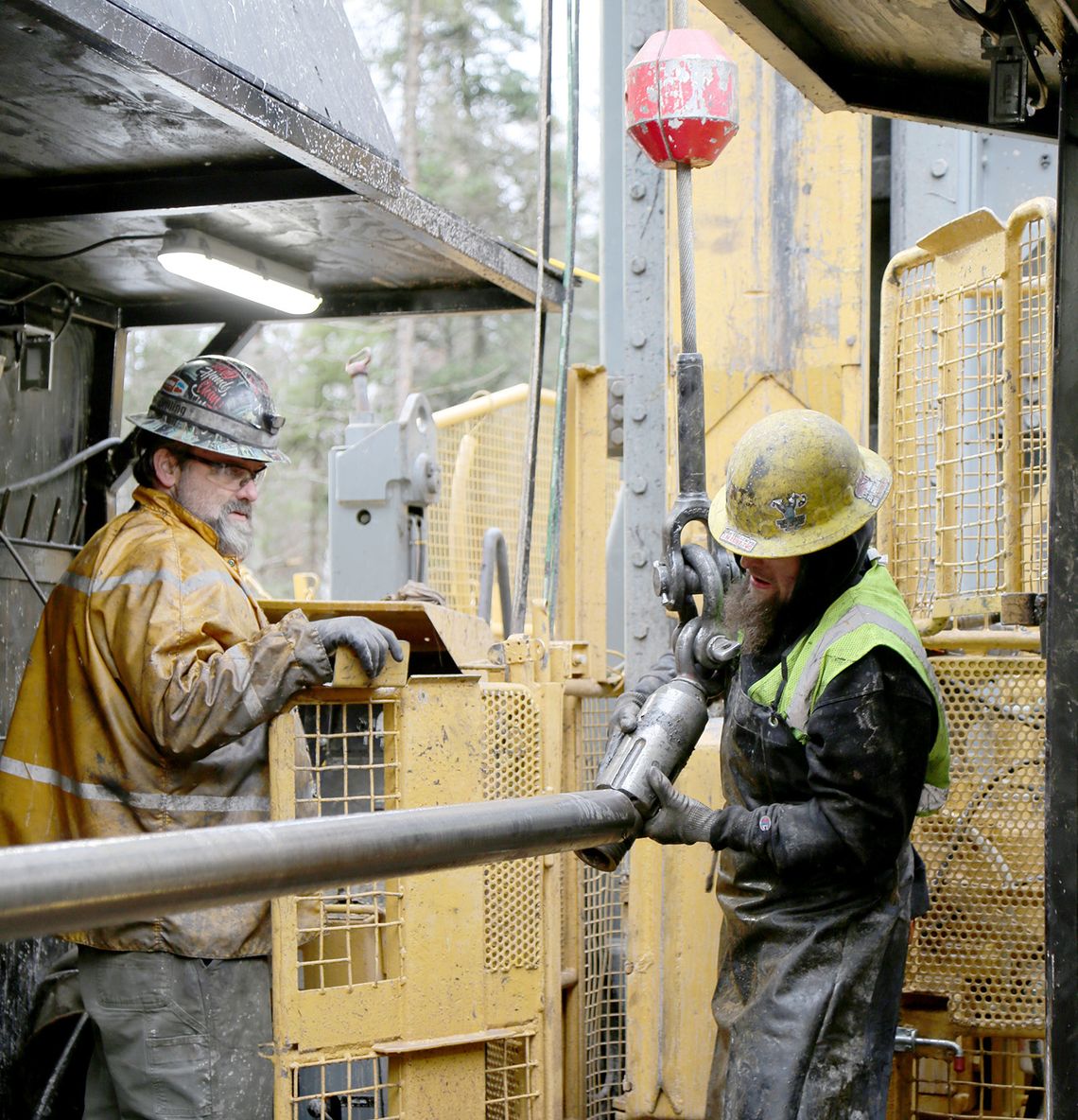Pulsar Helium is well on the way to finding out how much helium and other gases they have to work through 10 additional wells.
The $6 million project is underway and may take up to a year to complete due to only being able to access some areas in the wintertime.
The first hole being drilled by Timberline Drilling will have a depth of 3,500 feet. Timberline is based in Idaho but has a Minnesota office in Virginia.
Pulsar’s first two holes, named Jetstream 1 and 2 and reached depths of 5,100 and 5,600 feet. Of the 10 holes to be drilled, several are planned for the 5,000 foot depth.
Test results have found helium concentrations at an unheard of 13.8% at Jetstream 1, the highest ever recorded in North America.
Pulsar’s Steve Campbell was on site Tuesday and explained there aren’t large gaps in the drill core, but there are sections with small openings where the helium is located.
“Some fractures you can stick your hands in. Some fractures are microfractures, and they’re calcite-filled. Any type of gas, or even an oil, resides within the openings of a rock. So, draw four circles, and those would signify rock. The void spaces in between where the rocks are touching each other that’s where the helium is located. It takes capillary pressure to force that molecule out, and it also takes porosity and permeability, and permeability is just the ability of a gas to flow through a rock,” said Campbell.
There isn’t a big room or pool of helium, instead the gas is inside fractures within the rock.
“The fractures downhole are like a small little single lane highway. And we want to join those up to a major road system. So that’s what the well boring is. So you’re going from a single-lane highway to a major road system to get it to the surface. And your reservoir pressure is pushing it up,” said Campbell.
Pulsar will be able to map the fractures in the drill core and they are hoping it’s consistent from what they have already found.
“When we drill this thing, we should, we’re thinking we’re going to encounter a big fracture system around 1,775 feet to 1,850 feet to match up with Jetstream 1,” said Campbell.
He said the plan is to build a gas-capturing unit at Jetstream 1 and lay a gathering system to try to gather all the wells together, likely using PVC pipe from each well.
“We will come with a small footprint that’ll separate out the carbon dioxide first, and then it’ll go through another phase that the helium will go into another distillation tower, and it will clean up the helium, and so we’ll have, essentially, CO2 and helium,” said Campbell.
What’s missing is any hydrocarbons or natural gas, which is a good thing. There are also small amounts of nitrogen and argon.
“That’s part of the atmosphere we breathe,” said Campbell.
The newly found Helium 3, which is an exponentially higher value, is also present.
“We’ll have to send it to a lab and have a lab analyze it to tell us what purity the helium is at,” said Campbell.
The difference between helium one and helium three has to do with the age of the helium.
“Helium one is like a Pinto, Helium three is a Mercedes,” said Campbell.
He said the company will do 2D and 3D seismic work on the area as well to help determine the extent of the deposit.
For now drillers work 24 hours a day, two crews in 12 hour shifts.
In time, Campbell said a processing facility will have a loading facility, where they’ll come in with big tanker trucks, and offload the CO2 and the helium there.
“And then we’re about four miles from the rail, and then we could put it on rail, and then ship it wherever it needs to go. I think we’ve got some state representatives on board that would love to do that type of thing,” said Campbell.
Until then, Babbitt residents will see workers fueling up at gas stations before each shift and then heading to the east to drill for helium.











